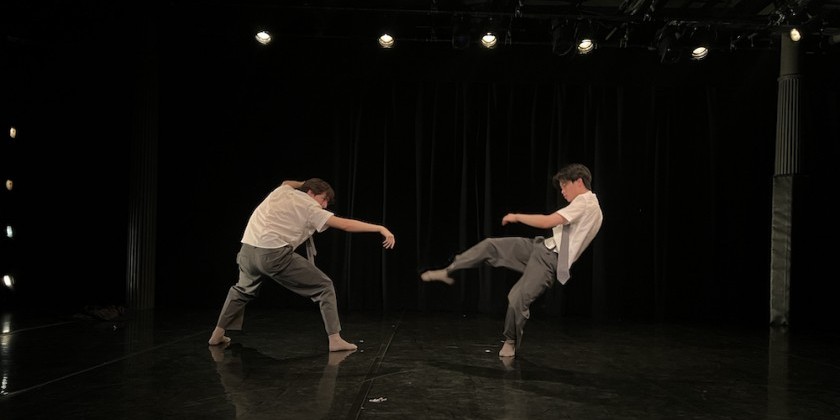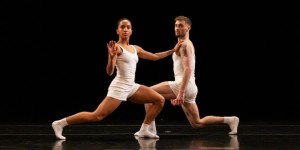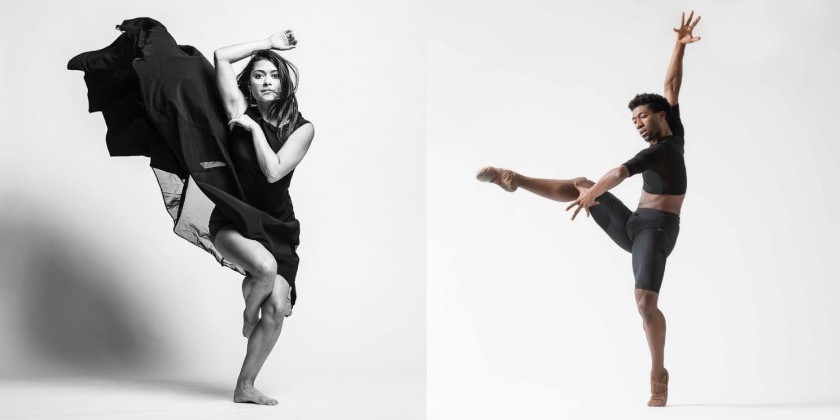IMPRESSIONS: Zoe Jumabhoy's “VERDICT” at Gibney Dance

Choreographer and director: Zoe Jumabhoy
Composer: Wylie Pendarvis
Dancers: Ben Moleta, Derek Lee, Eliana Balzano, Hannah Morris, Nigel Clifford
Assistant Choreographer: Nigel Clifford
Rehearsal Director: Ben Moleta
Company Manager: Eliana Balzano
Zoe Jumabhoy is a Singapore-based choreographer and 2022 graduate of Boston Conservatory’s Bachelor of Fine Arts program in Contemporary Dance Performance. She makes her professional choreographic debut with VERDICT, an evening-length work featuring a cast of five dancers she met in the Boston Conservatory program. On the whole, the dance shows considerable promise and room for development as Jumabhoy steps boldly into her choreographic career.

VERDICT unfolds in chapter-like sequences that blend individual expression with dramatic partnering and passages of group unison. While some sections fall short of coherent resolutions, thematic throughlines of uncertainty and confrontation help to connect the work’s disparate capsule narratives. The dancers wear identical slouchy business suits and socks, giving them the look of rumpled young professionals whose sartorial discomfort parallels their reluctance to conform to social norms. Wylie Pendarvis’s original score leans into the cinematic mood, with ambient urban sounds that blend into lilting piano waltzes and twangy Western-tinged guitar. In the intimate black box space, the black curtains, black chairs, and shifting light create a tense, contained environment placed at an anonymous remove.

Jumabhoy is adept at composing phrase work with a remarkable dynamic range that plays to the dancers’ particular strengths. The women are limber, fluid, and peppered with sharpness, while the men fuse acrobatic virtuosity with unpredictable drama.
Instability pervades the movement as the dancers’ feet slip out from under them — even the floor can’t be trusted as a firm surface upon which to stand. Partners enfold and lift one another only to drop their connection or withdraw their support as a callous afterthought. Hints of interpersonal confrontations are sudden and frantic one moment, simmering and connected the next. Bodies push and tumble through fraught power relationships that flare into palpable aggression. Large, full-bodied movements interact with small, isolated details to embody expressions of resistance and futility. Limbs extend into momentary gracefulness only to distort into trembling gestures or fracture at uncomfortable angles. The dancers drop to their knees, palms open in surrender as if undercut by an unseen force. Smooth slides give way to sudden twists and falls, and slow cartwheels crumple upon impact into a protective heap.
Movement material is certainly not lacking in VERDICT — it veritably overflows with content as the dancers ripple, dart, stomp, skid, and slither through shades of calculated ennui and unbridled angst. Indeed, Jumabhoy’s message is at risk of becoming lost amid this flood of movement.
%20Hannah%20Morris%2C%20Derek%20Lee%2C%20Nigel%20Clifford%20_%20Photo%20courtesy%20Zoe%20Jumabhoy.jpg)
VERDICT clearly demonstrates Jumabhoy’s fluency in classical, contemporary, and commercial dance styles and bears marks of an emerging choreographic voice. A focus on crafting specific gestural languages and movement signatures, perhaps with dramaturgical guidance, could lend Jumabhoy’s future work a more definitive shape.













